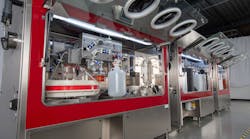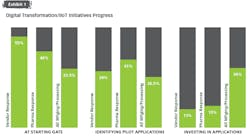Virtualization is a promising technology for those looking to maximize growth potential and stay ahead of the competition. A software technology that decouples the physical hardware of a computer from its operating system and software applications, “virtualization creates a pure software instance of the former physical computer,“ explains Rockwell Automation's Anthony Baker.
Virtualization and thin clients -- computers that are purpose-built for remoting into a server -- were initially adopted for data centers and other commercial IT applications to save money and space. And while pharmaceutical manufacturing plants tend to adopt IT trends more cautiously than their commercial counterparts, lower costs, greater reliability and longer lifecycles are helping virtualization and thin client visualization to grow rapidly in the process industries.
Some key benefits of using a virtualized solution paired with a thin client, according to experts at Pepperl+Fuchs:
• Increased security and reliability
• Longer hardware lifecycle
• Reduced operating costs
• Workspace mobility
• Lower energy consumption
• Fewer PCs required
“When a PC fails, the average time to rebuild a PC has been eight to 10 hours, but the worst case with virtualization is 30 minutes,” notes Tom Oberbeck, a senior electrical engineer at Mallinckrodt, the world’s largest supplier of controlled substance pain medication and acetaminophen.
In the pharmaceutical industry, replacement of a PC is an event that also requires revalidation, upping the cost to astronomical levels – in some cases, up to $100,000. Instead of investing in costly hardware and software upgrades, pharma companies are implementing virtualization. And the savings realized by virtualization are significant.
For example, Gallus BioPharmaceuticals Engineering recently deployed a new Rockwell Automation PlantPAx process automation system that replaced six nonvirtualized servers with two virtual servers, saving 60% of the server costs, or $20,000.
“Further advancements in virtualization promise to increase adoption rates, propelling process automation systems to a brave new world that takes advantage of IT advances, while improving safety, availability and security,” says Dan Herbert, PE and contributing editor for Control Design magazine.
The editors or Pharmaceutical Manufacturing and Chemical Processing, with insight from Dan Herbert as well as experts at Pepperl+Fuchs and Honeywell Process Solutions, have put together a special report: The Time is Right for Virtualization. Download the report now to learn how virtualization can help reduce risk and improve capital efficiency for automation, along with virtualization case studies and details about the essential roles of HMI in the pharmaceutical manufacturing process.




